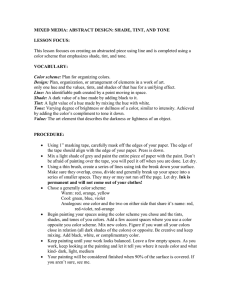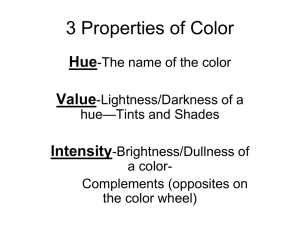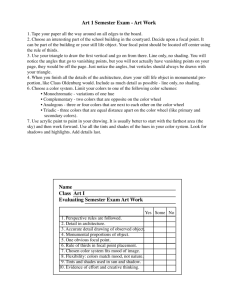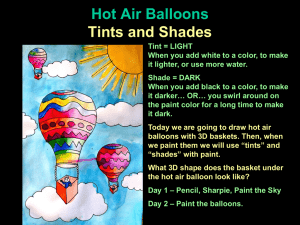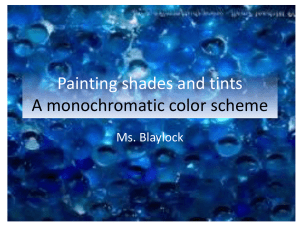Monochromatic Value Scale Tints and Shades
advertisement
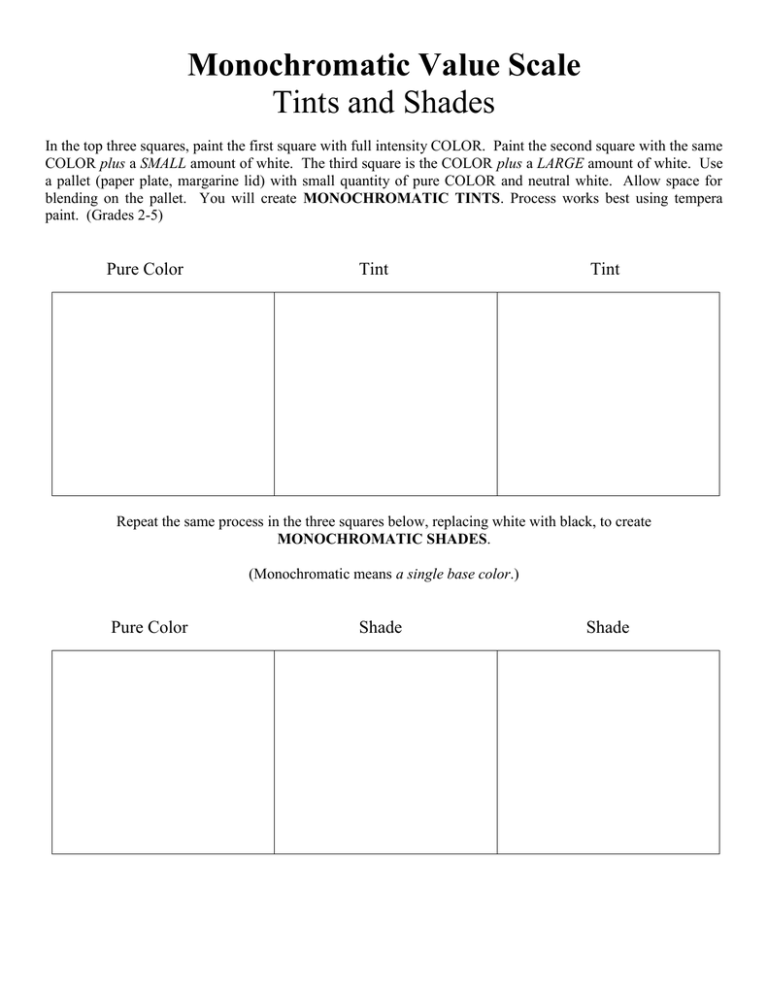
Monochromatic Value Scale Tints and Shades In the top three squares, paint the first square with full intensity COLOR. Paint the second square with the same COLOR plus a SMALL amount of white. The third square is the COLOR plus a LARGE amount of white. Use a pallet (paper plate, margarine lid) with small quantity of pure COLOR and neutral white. Allow space for blending on the pallet. You will create MONOCHROMATIC TINTS. Process works best using tempera paint. (Grades 2-5) Pure Color Tint Tint Repeat the same process in the three squares below, replacing white with black, to create MONOCHROMATIC SHADES. (Monochromatic means a single base color.) Pure Color Shade Shade VALUE - SHADES OF PRIMARY AND SECONDARY COLOR When colors are mixed with BLACK, they are called SHADES. There are many values of shades for every color of the color wheel. This activity teaches how to create shades using each Primary and Secondary color. Paint a color in a box on the left as listed. Now, follow the instructions for painting progressively darker value shades of each color in the remaining boxes across the row to the right. Add a very small amount of black each time, mix well, and then paint a square. This will create graduating value shades of the Primary and Secondary colors. Mix the colors on a paper plate or a piece of waxed paper. Do not rinse your brush until you have mixed and painted each progressive value of one color across a row. Rinse your brush well before moving down to the next new color. Colors of the Color Wheel at their FULL INTENSITY Red Orange Yellow Green Blue Add one tiny dab of black and mix well to create a light middle value SHADE. Add another tiny dab of black to the color and mix well for a darker middle value SHADE. Add another tiny dab of black to create the darkest value SHADE of this color. Purple (Violet) VALUE - TINTS OF PRIMARY AND SECONDARY COLOR This activity teaches how to create tints of each Primary and Secondary color. When colors are mixed with WHITE, they are called TINTS. There are many values of tints for every color of the color wheel. Mix the various tints on a paper plate or piece of waxed paper. Begin with a large amount of white and a clean paintbrush for each new color. Mix, then paint the color in the boxes as directed, gradually adding more color to create progressively darker value tints of the Primary and Secondary colors. Do not rinse your brush until you have mixed and painted the darkest value tint for a particular color. Rinse your brush well to paint the full intensity colors on the far right. Begin with white and add a tiny amount of the pure color listed on the far right, to create its lightest value TINT. Red Orange Yellow Green Blue Add another tiny dab of pure color to the last TINT mixture. Mix well for a darker middle value TINT. Add additional pure color to the last TINT mixture and create a darker value TINT. With a clean brush, paint the Primary and Secondary Colors at their FULL INTENSITY in this column as listed. Purple (Violet)
